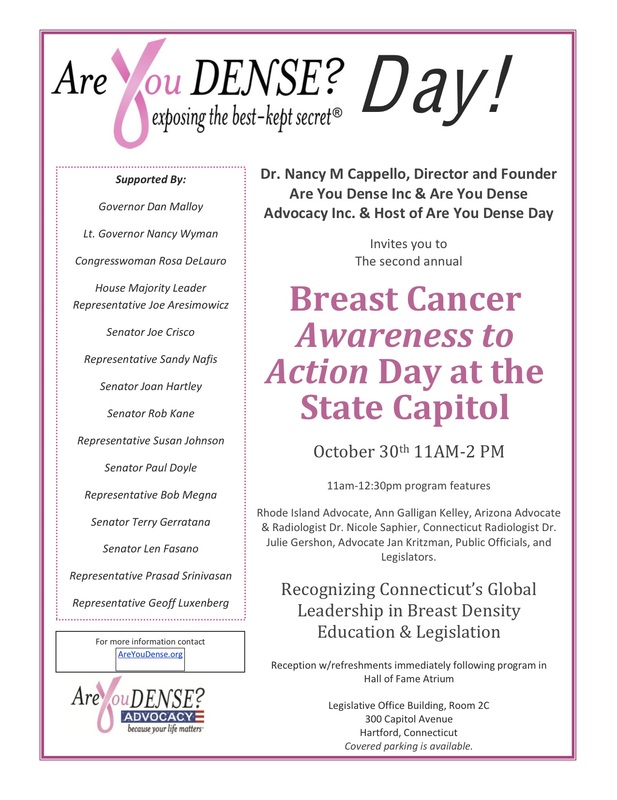|
I recently wrote this article for Beekley Medical and it was published on their blog page. Enjoy!
1 Comment
At the current American Roentgen Ray Society conference in New Orleans, researchers in Rochester, NY found that ultrasound imaging in dense breast tissue detected significantly more cancers than digital breast tomosynthesis (3D mammography). Author, Dr. Stamatia Destounis, stated “Seventeen cancers were found on ultrasound only. If we had only performed tomosynthesis, we would have missed these. Overall, ultrasound outperformed 3D mammography in identifying cancer in this group.” The average lesion size was also significantly smaller on the ultrasound studies, thus reconfirming the added value of screening breast ultrasound in patients with dense tissue. The detected small cancers are typically early stage and can be successfully treated. For more information take a read...ARRS: Don't Underestimate Breast Ultrasound in Cancer Arsenal
 Do you have a family history of breast cancer? Have you ever considered genetic testing for a BRCA mutation? Are you of Ashkenazi Jewish descent Or, do you just want to know? is here! I recently started working with Color Genomics, Inc. to test individuals for BRCA mutations. The test requires a small saliva sample, costs $249, and gives an extremely accurate genetic interpretation. No criteria are needed for testing, as it is an out-of-pocket expense. However, charges can be submitted to insurance if family history criteria are met. If you have always wanted to know, here is your chance. Feel free to contact me with any questions, or to schedule a testing appointment. On Thursday, February 23rd, I attended a hearing at the Connecticut State Capitol for Senate Bill 810. The bill is up for review and would entitle women with dense breast tissue the right to a screening breast ultrasound with no out-of-pocket payment. The proposed bill states that regarding insurance coverage "No such policy shall impose a copayment or deductible for an in-network mammogram or comprehensive ultrasound examination." I spoke in support of this bill, along with Jan Kritzman and Heidi Grise. Both Jan and Heidi are breast cancer survivors who have dense breast tissue and their cancers were detected only by screening breast ultrasound. I cannot stress enough the value of screening breast ultrasound in dense breast tissue. Small, invasive cancers are frequently found on ultrasound in patients with a negative mammogram. Early detection allows for easier treatment to the patient and saves lives. Every woman with dense breast tissue should be able to undergo screening breast ultrasound without the worry of additional cost. In addition to our in-person testimonies, there were 18-20 written testimonies also submitted in support of the bill. The next step is the State Senate. Let's keep our fingers crossed that the bill passes and all women with dense breast tissue will be covered by insurance for their screening breast ultrasound!
This past Saturday evening I attended the 8th annual Are You Dense? Music Fest, as both a guest and an award recipient. I was honored with the "Champion" award and my close friend, and breast cancer advocate, Jan Kritzman, was given the "Queen Esther" award. It was a truly memorable evening and I am very appreciative to Dr. Nancy Cappello for acknowledging myself and Jan at such a wonderful event. Nancy has advanced the field of breast imaging across the U.S. and worldwide, through the use of screening breast ultrasound in patients with dense breast tissue. I encourage women to view her website, www.areyoudense.org, and learn for yourself the great impact of breast ultrasound in detecting cancers in patients with dense breast tissue.
The American Cancer Society released new recommendations yesterday for screening mammography. They are recommending that women of average risk begin screening mammography at age 45. With the new recommendations, women ages 45-54 should be screened annually, and 55 and older should begin biennial screening, with the opportunity to screen annually if they wish.
The American College of Radiology and the Society of Breast Imaging continue to recommend that women have yearly mammograms beginning at age 40. As a practicing breast radiologist, I have diagnosed breast cancers in women of all ages, many younger than 40. I have seen late stage cancers in older women who skipped a yearly mammogram, or two. I have followed many women who are breast cancer survivors, thanks to early diagnosis and treatment. I am a strong believer that mammography saves lives. I urge women to be knowledgeable about their care and understand the benefits of screening mammography. Please take the time to check out these two websites for more information. End the Confusion and Mammography Saves Lives As I was going through my emails, I came across an article written by Dr. Amy Thurmond, director of Women's Imaging in Lake Oswego, OR. This article states everything I believe in and I could not have said it better myself! As a breast imaging radiologist, I am happy to be able to offer my patients the same level of care that Dr. Thurmond provides for her patients. Please take a moment to read...
"Breast Imaging Providers Must Lead Density Education"(click here). Eating my breakfast this morning and reading the Wall Street Journal, I came across an article titled “New Screening Tests for Hard-to-Spot Breast Cancers”. Of course I eagerly began to read, as I was curious what new information was going out to the general public.
Firstly, how excited was I to see quotes in the article from my two “breast buddies”, Dr. Nancy Cappello and Jan Kritzman! Two amazing women from here in Connecticut, working hard to promote dense breast tissue notification laws and dense tissue awareness. The WSJ article discusses various imaging techniques for patients with dense breast tissue. While mammography is the only “breast-screening” modality proven to save lives, it is limited in patients with dense breast tissue. Approximately 50% of women have dense breast tissue and these women have a 4-6x increased risk of breast cancer due to the dense tissue itself. Full-field digital mammography is an excellent modality for imaging dense breast tissue and there is minimal radiation exposure with this exam. In patients with dense tissue, a screening bilateral breast ultrasound is an extremely helpful imaging adjunct. Ultrasound allows the radiologist to see further into the dense tissue and it detects cancers, usually the small ones that hide on the mammogram. For each cancer found, some false positives will result and this can create patient anxiety. However, as my friend Jan says, “I’d rather be scared for a couple of days than dead.” Ultrasound is quick, easy and adds no additional radiation exposure. New imaging technologies are being promoted to the public, including breast tomosynthesis (3D mammography). In an age where people are concerned about their health and exposure to radiation, this test doubles one’s radiation dose. While it is being promoted as a method for detecting more cancers, it is only of value in patients with dense breast tissue. And many of these patients will gain more benefit from a screening ultrasound, or may require an ultrasound for a specific area seen on the 3D images. Many insurance companies feel 3D mammography is an unproven technique for detecting additional cancers and few are paying for this study. Additional costs to the patient are often at least $50-75, whereas routine full-field digital mammography is completely paid for by insurance. Other imaging modalities such as MRI (magnetic resonance imaging) and MBI (molecular breast imaging) are available for specific cases. MRI is time consuming, expensive, and produces many false positives. MBI is not yet widely available and is costly, with limited insurance coverage. Approximately half the patients I see in my practice have dense breast tissue. I honestly feel that a full-field digital mammogram and bilateral breast ultrasound are the best imaging modalities for screening these women for breast cancer. The two tests combined are precise and diagnostic, with little radiation exposure and cost to the patient. In my private practice, I personally perform all the breast screening ultrasounds. Of the hundred or so done, 4 patients have been diagnosed with small invasive cancers, not seen on mammography. While mammography may be the “proven” screening modality for breast cancer detection, I can personally attest to the value of screening breast ultrasound for cancer detection. Both mammography and breast ultrasound save lives! Julie S. Gershon, M.D. To view the WSJ article click here. Also, be sure to check out Are You Dense.org. This past summer I read a book titled, Then Came Life, by Geralyn Lucas. It was an inspiring novel written by a woman diagnosed with breast cancer at age 27. This is Geralyn’s second book and in it she talks about her everyday life, living with breast cancer, in a humorous manner, often relating back to her treatments and diagnosis. While predominantly light-hearted and funny, the novel also takes a more serious note in the discussion of Geralyn’s first cousin being diagnosed with breast cancer and her eventual passing. As a radiologist, frequently diagnosing women with breast cancer and seeing many survivors, this book hit home to me. I thoroughly enjoyed every chapter and found myself both laughing and crying along with Geralyn. Every woman who has undergone treatment for breast cancer is a hero to me and a symbol of courage and strength.
Yesterday evening I had the opportunity to speak with Geralyn over the phone and to hear her enthusiasm and fun loving personality. She is very excited about speaking in our community next month. I invite everyone to join us at the Mandell JCC for the Jewish Book Festival event on Sunday, January 11th. It is going to be a truly wonderful experience for all who attend! |
AuthorJulie S. Gershon, M.D. Archives
October 2023
Categories |
||||||
|
J Gershon Breast Imaging
|
21 Arch Rd. Avon, CT 06001
|
P: 860.673.8379 F: 860.271.8025
|








 RSS Feed
RSS Feed